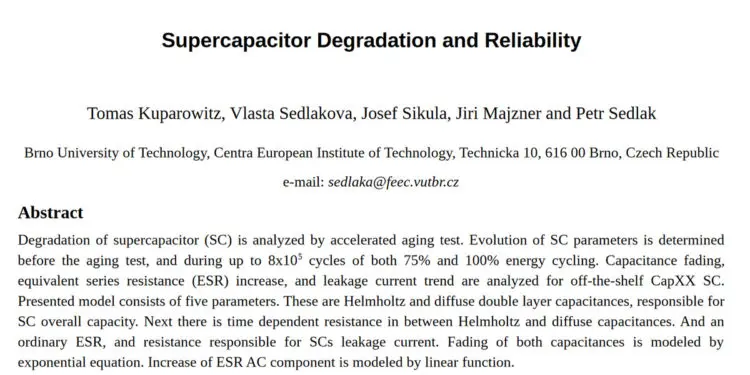Abstract:
Degradation of supercapacitor (SC) is analyzed by accelerated aging test. Evolution of SC parameters is determined before the aging test, and during up to 8 x 105 cycles of both 75% and 100% energy cycling. Capacitance fading, equivalent series resistance (ESR) increase, and leakage current trend are analyzed for off-the-shelf CapXX SC.
Title: Supercapacitor Degradation and Reliability
Author(s): Tomas Kuparowitz, Vlasta Sedlakova, Josef Sikula, Jiri Majzner and Petr Sedlak
Organisation(s): Brno University of Technology, Central European Institute of Technology, Technicka 10, 616 00 Brno, Czech Republic
Symposium: 1st PCNS Passive Components Networking Days, 12-15th Sep 2017, Brno, Czech Republic
Reference: paper 3.3. Supercapacitors Session., PCNS2017 Proceedings Pg.63-68
ISBN: 978-80-905 768-8-9
e-Sessions Applications:
e-Sessions Scope Components: Capacitors
e-Sessions Topics: Measurement & Test, Simulation & Modelling
read the full paper in pdf here.































